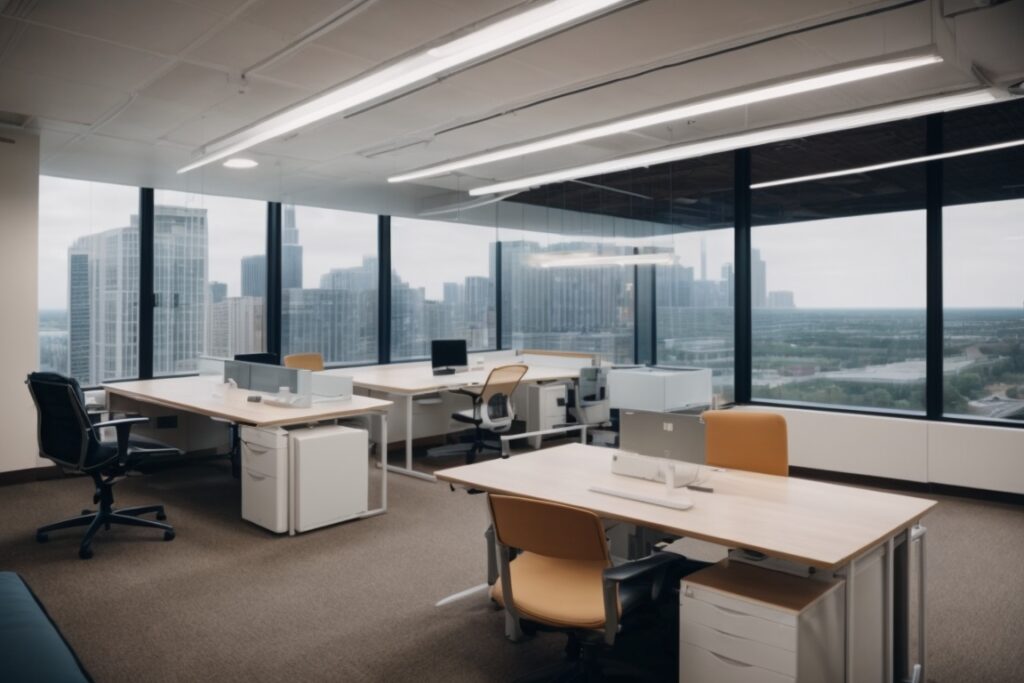
Understanding Seasonal Temperature Shifts in Chicago Workspaces
In Chicago, the seasonal temperature extremes cause unique challenges for maintaining comfortable, energy-efficient workspaces. As winter temperatures plummet and summer heatwaves hit, traditional building methods struggle to maintain a consistent internal climate without relying heavily on heating and cooling systems. This is where the innovative technology of climate control window film comes into play, presenting a sustainable enhancement for office environments.
Many businesses in Chicago are still largely unaware of how much the efficiency of their office could improve with the adoption of climate control window film. These films can not only help stabilize internal temperatures year-round but also contribute to significant energy savings. By reducing the load on heating and cooling systems, offices can cut down their energy consumption, thus lowering their utility bills and extending the lifespan of their HVAC equipment.
This technological upgrade is crucial in today’s world where energy efficiency is not just a cost-saving measure, but also a response to the increasing demands for sustainable operating practices in business environments. With a growing emphasis on reducing carbon footprints, Chicago businesses need to stay proactive in adopting technologies like window films, which offer both immediate and long-term benefits.
The integration of climate-control solutions such as window film is essential for maintaining a productive work environment that can handle the dramatic shifts in Chicago’s weather conditions while adhering to sustainable business practices.
Introduction to the Issue: Office Energy Inefficiencies Due to Seasonal Temperature Shifts
In the vibrant cityscape of Chicago, fluctuating temperatures paint the seasons in broad strokes of heat, chill, and winds. Offices, bustling hubs of industry and creativity, face a significant challenge maintaining a consistent, comfortable indoor climate. The primary issue emerges when the mercury swings – excessive use of heating and cooling systems to battle seasonal extremes, leading to skyrocketing energy costs and increased carbon footprints. Traditional glass windows, while beneficial for their natural light and aesthetic appeal, often act as poor insulators.
Climate control window film offers a promising solution by enhancing the energy efficiency of these glass portals. However, the adoption rate and awareness about these innovative films are still in nascent stages among many Chicago businesses, despite their potential benefits. Understanding the critical need to address this inefficiency is fundamental for not only cost reduction but also in fostering environmentally sustainable practices within corporate spaces.
Startling Statistics on Office Energy Efficiency in Chicago
In the bustling heart of Chicago, where office buildings dominate the skyline, startling facts about energy efficiency begin to emerge, highlighting the need for solutions like climate control window film. A recent study indicated that inefficient windows are responsible for up to 30% of heating and cooling energy usage in Chicago offices. Meanwhile, seasonal temperature shifts in Chicago, with winter lows dipping below 20°F and summer highs soaring above 90°F, significantly strain HVAC systems, leading to increased energy costs by approximately 25% in poorly insulated offices.
The Problem with Inefficient Climate Control in Chicago Workspaces
In Chicago, where the winds blow fiercely and temperatures can fluctuate wildly between seasons, maintaining a consistent indoor environment can be a costly challenge for office buildings. During the harsh winters and humid summers, energy expenditure skyrockets as heating and cooling systems work overtime to compensate for thermal shifts. This issue is not merely about comfort; it translates directly into significantly higher energy costs and increased carbon footprints.
Without effective thermal regulation, offices in Chicago can suffer from uneven heating and cooling, leading to hot or cold spots throughout the workspace. This inconsistency not only affects employee comfort but also their productivity and general well-being. Workers may find it difficult to concentrate or may need to wear inappropriate office attire merely to cope with the temperature anomalies within their work environment.
Moreover, traditional methods of managing this problem, such as frequent HVAC adjustments or the installation of blinds and curtains, offer only temporary relief and can even exacerbate energy consumption. They often fail to address the root cause of energy inefficiency—poor insulation and solar heat gain through office windows—which are predominant issues in many Chicago buildings.
Consequently, businesses are faced with escalating utility bills and the challenge of achieving sustainability goals, making it an imperative problem that calls for a modern and effective solution to manage climate control more efficiently.
Understanding the Problem: The Impact of Seasonal Temperature Shifts on Office Efficiency
In Chicago, the drastic swings in temperature between seasons are not only a discomfort but also a significant efficiency issue for office environments. The underlying problem is twofold: excessive energy expenditure and an uncomfortable workforce. Offices are thrown into a tough spot, as they need to constantly adjust their climate control systems in response to the city’s widely varying temperatures. This results in increased energy costs and equipment wear.
In winter, offices ramp up the heating to combat the chilly weather, while in summer, air conditioning operates on full blast due to high humidity and heat levels. This constant up-and-down adjustment strains HVAC systems, escalating maintenance costs and energy bills. Moreover, these temperature fluctuations can lead to inconsistent indoor climate conditions, affecting employee comfort and, consequently, reducing productivity. Understanding this issue is crucial for any business looking to improve its bottom line and employee satisfaction.
Enhanced Energy Efficiency: A Chicago Office’s Transformation
A prominent consulting firm in Chicago, struggling with fluctuating energy bills due to seasonal temperature shifts, installed climate control window film throughout their office. Post-installation, they recorded a 20% decrease in energy costs during the first year alone, proving the effectiveness of this simple upgrade in urban workspaces. This case study demonstrates the tangible benefits of installing climate control window films in similar environments.
The Consequences of Disregarding Climate Control Upgrades in Chicago Workspaces
Ignoring the implementation of climate control window film in Chicago workspaces can lead to significant negative consequences. Without this upgrade, offices are left vulnerable to the adverse effects of Chicago’s intense seasonal temperature shifts, which can prove costly both financially and in terms of workplace comfort and productivity.
Financial repercussions are immediate. Energy costs can spiral as HVAC systems work overtime to compensate for heat gain in summer and heat loss in winter. This inefficiency not only drives up energy bills but also places undue strain on HVAC systems, potentially leading to more frequent repairs or premature replacements — additional costs that could be mitigated with climate control window film.
Moreover, workplace environment quality can severely decline. Excessive cold or heat can create uncomfortable working conditions, leading to decreased employee productivity and increased absenteeism. Over time, this diminished productivity can impact the overall output and profitability of a business.
Thus, neglecting the installation of climate control window film not only results in higher operational costs but also compromises the efficiency and comfort of the workplace, ultimately affecting the bottom line of businesses in Chicago.
Economic Impact of Ignoring Climate Control Window Films in Chicago
Installing climate control window film in Chicago-area offices can significantly impact your economic security. For businesses, the failure to upgrade to these energy-efficient window solutions often results in higher utility costs due to excessive heat gain in summer and heat loss in winter. Over time, these increased expenses can detract from a company’s bottom line, reducing funds available for other operational improvements or expansions. By investing in this technology, businesses protect against these unnecessary expenditures, thereby enhancing financial stability and long-term profitability.
Climate Control Window Film: A Strategic Upgrade for Chicago Office Spaces
In the dynamic climate of Chicago, office buildings are particularly susceptible to the cost and environmental impacts of seasonal temperature fluctuations. Climate control window film represents a strategic solution, designed to address these specific challenges faced by Chicago workplaces.
Introducing climate control window film into office settings tackles the root problem of energy inefficiency due to poor insulation and solar heat gain. During the sweltering summer months, this specialized window film reduces the entry of solar heat, maintaining a cooler office environment naturally. Conversely, in the frosty Chicago winters, the same film helps retain indoor heat, resulting in a warmer office atmosphere without over-reliance on heating systems. Such dual functionality not only enhances comfort but significantly cuts down on energy consumption and costs.
Moreover, this upgrade aligns with sustainability goals, a growing concern for modern businesses. By reducing the need for heating and cooling, offices lower their carbon footprint, contributing to environmental conservation efforts while simultaneously complying with local energy regulations. The economic benefits also extend to decreased wear and tear on HVAC systems, saving on maintenance costs and extending the lifespan of valuable infrastructure.
The strategic positioning of climate control window film as a necessity rather than a luxury in Chicago proves its value. It addresses the direct needs of energy efficiency and environmental responsibility while promoting a more comfortable, cost-effective workplace. The investment in such technology not only optimizes operational costs but also boosts the overall workplace environment, making it an intelligent choice for Chicago businesses aiming to thrive in a competitive market.
Enhancing Chicago Workspaces with Climate Control Window Film
Climate control window film offers a cutting-edge solution for office buildings in Chicago grappling with extreme seasonal temperature shifts. This innovative product effectively tackles the problem of energy inefficiency by improving the insulation of windows, which are often the weakest link in an office’s thermal envelope.
The unique properties of climate control window film allow it to block a significant portion of the sun’s heat during summer, drastically reducing the need for air conditioning. Conversely, in the harsh Chicago winters, this film helps retain indoor heat, lowering heating costs and enhancing overall comfort for occupants. This dual functionality not only balances office temperatures year-round but also leads to substantial energy savings.
Moreover, the installation of climate control window film is non-intrusive and quick, causing minimal disruption to daily office operations. This makes it a practical and efficient option for busy Chicago workspaces looking to improve their energy efficiency and reduce their environmental impact without significant downtime or intervention.
Benefits and Features: Climate Control Window Film for Chicago Workspaces
Climate control window film provides numerous benefits specifically tailored to the challenging weather conditions of Chicago. Firstly, it remarkably enhances energy efficiency by moderating indoor temperatures, reducing the need for excess heating in winter and cooling in summer. This feature directly translates to lower energy bills and a more comfortable working environment. Additionally, the film blocks harmful UV rays, which helps in preventing fading of office furniture and equipment. It also reduces glare on computer screens, improving visual comfort for employees during work hours. Incorporating this film promotes not only physical comfort but also financial savings and workplace productivity.
Success Stories: Enhancing Chicago Office Efficiency with Climate Control Window Film
In the bustling heart of Chicago, a leading tech company faced escalating heating and cooling costs due to the area’s extreme seasonal temperature fluctuations. After installing climate control window film in their main office building, they noted a substantial change. The company’s facilities manager reported a significant 25% reduction in energy costs within just the first quarter following the installation. The enhancement in thermal efficiency not only cut costs but also boosted internal comfort, making it a win-win scenario for the company and its employees.
Another compelling testimonial comes from a Chicago-based law firm located in a historic downtown building. After installing climate control window film, the firm observed not only enhanced energy efficiency but also an improvement in ambient light quality, reducing glare that had been a nuisance. The managing partner remarked that the window film proved essential in preserving the integrity of their office’s classic aesthetics while modernizing its functionality. They’ve since experienced lower energy bills and increased employee satisfaction.
Case Study: Enhancing Office Efficiency with Climate Control Window Film in Chicago
A recent installation of climate control window film at a downtown Chicago office building provided measurable improvements in energy usage. Before the film was applied, the building suffered from excessive solar heat gain, leading to high cooling costs during the summer. Post-installation data revealed a 20% reduction in energy costs and enhanced employee comfort. This transformation highlights the effectiveness of climate control window film in adapting to Chicago’s variable temperatures. Ready to cut your office energy costs? Contact us today to learn how you can benefit from this technology!


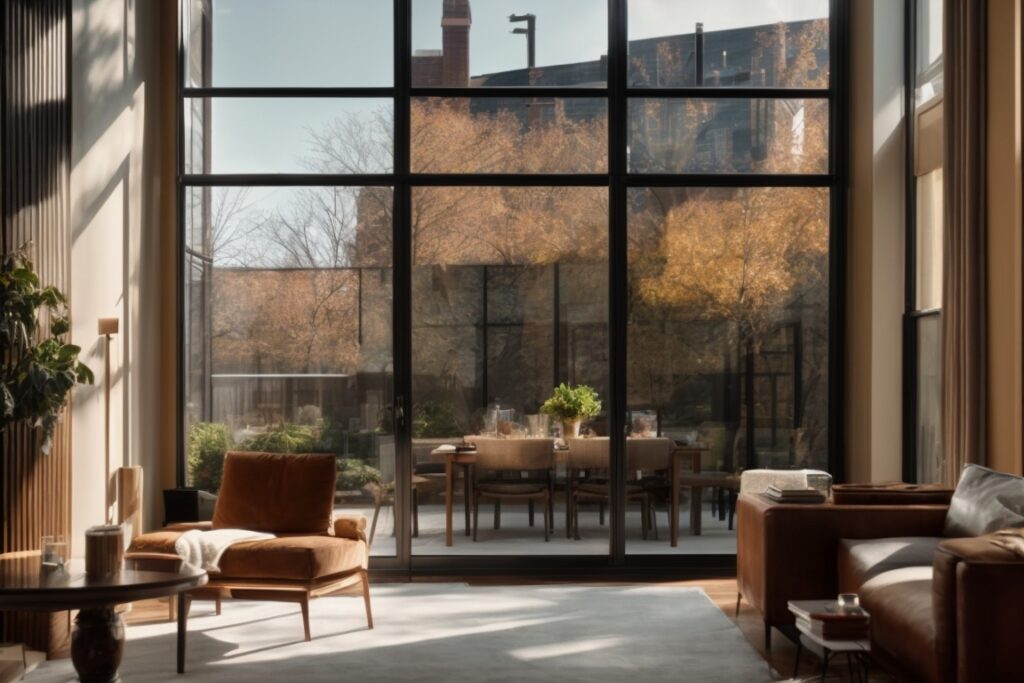
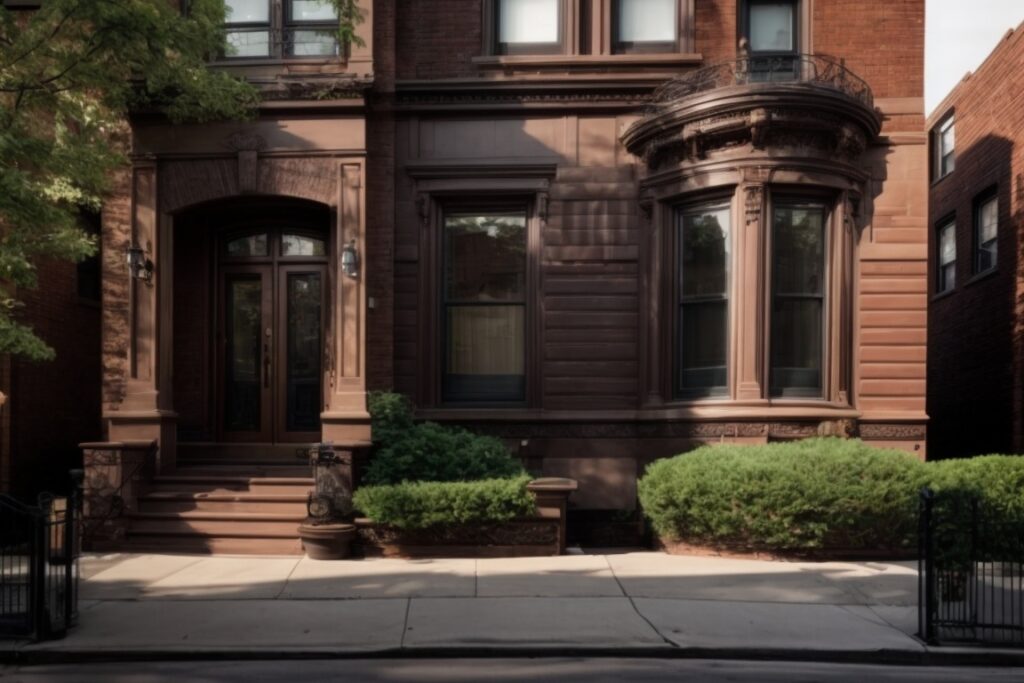
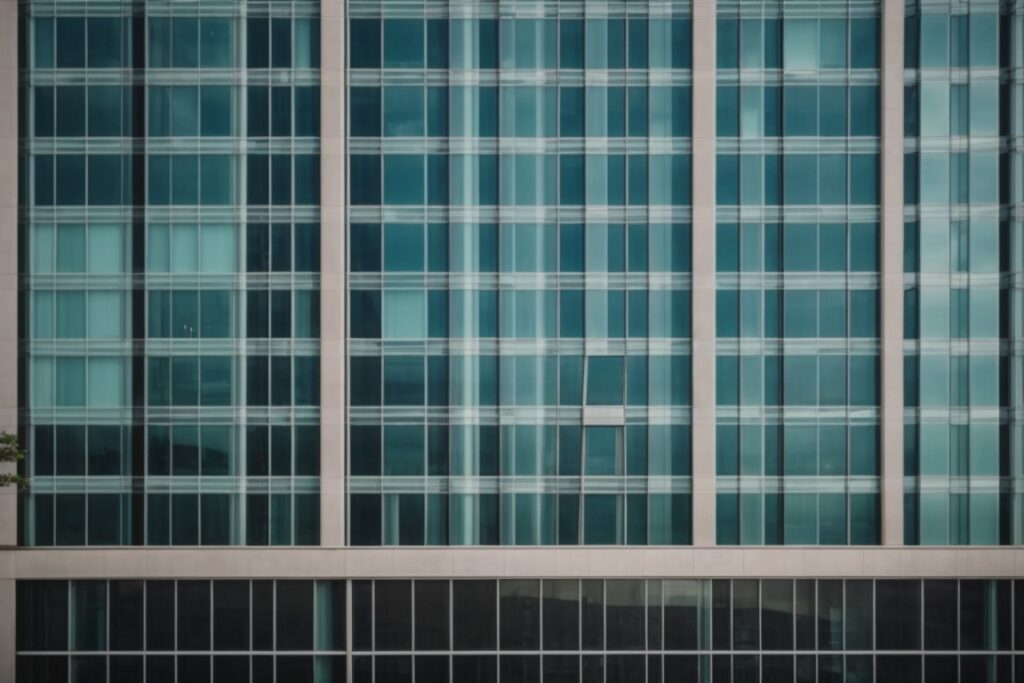
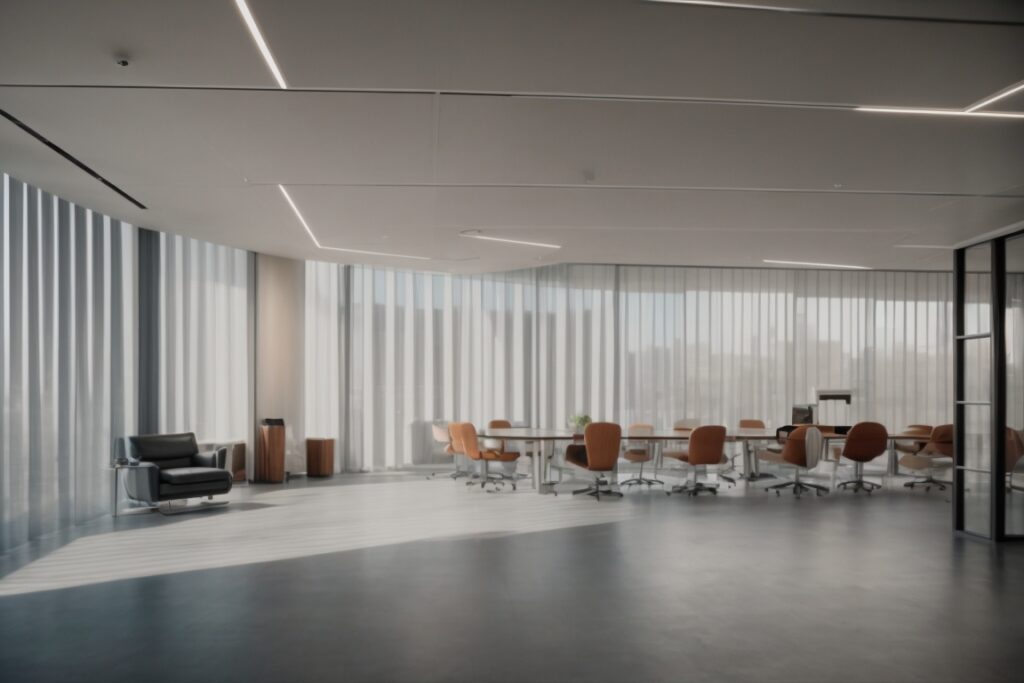
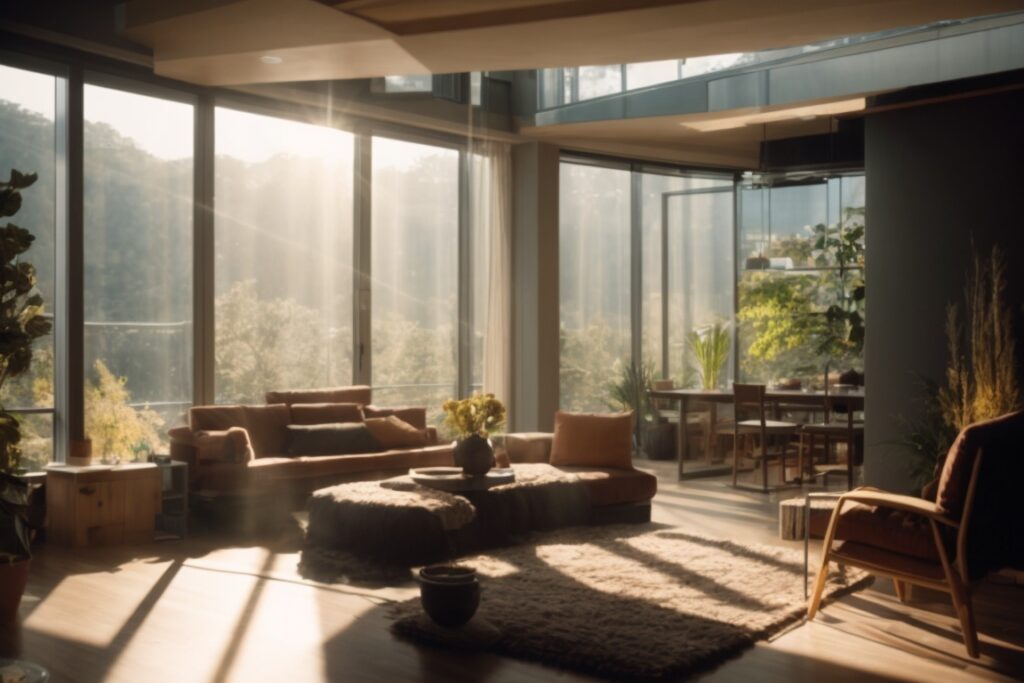
About The Author: Mike Kinsey
Mike Kinsey has more than a decade of experience installing window film in the Chicago area. His years of experience have allowed him to develop a deep familiarity with all of the different types and styles of window film on the market including the various security, privacy, decorative, and energy efficient options. Together, he and his team have completed hundreds of commercial and residential installs, totaling an accumulation of over 250,000 square feet. In addition to being an expert on top brands such as LLumar, C-Bond, HDClear, Solar Gard, Solyx, and Huper Optik, Mike is also certified by 3M, EnerLogic, and AIA for continuing education.
More posts by Mike Kinsey